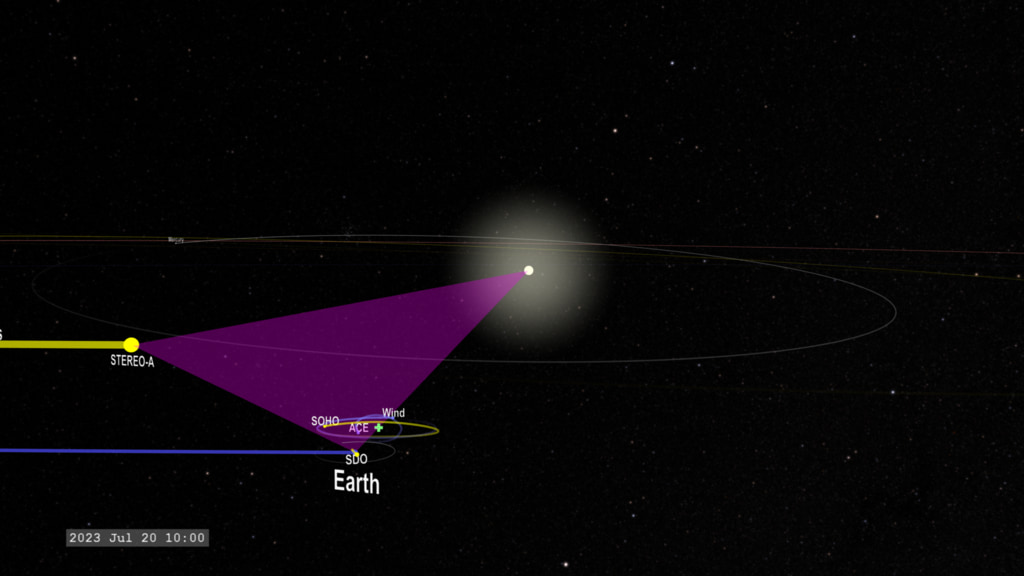STEREO Achieves Full Solar Coverage: All the Sun. All the Time
When the two STEREO spacecraft move into positions on opposite sides of the Sun, we will have the capability to see a full 360 degrees around the solar sphere (there will probably still be some gaps in visibility near the poles of the Sun). Combined with solar observing satellites near the Earth, such as SDO and SOHO, this coverage will last for about eight years and the STEREO spacecraft move along in their orbits.
This movie illustrates the orbital motions of the two STEREO spacecraft relative to the Earth (and noting the positions of the planets Mercury & Venus for reference). The camera occupies a position fixed relative to the Earth and Sun, so the distant starfield appears to spin around the observer.
Because the frames are sampled at one per solar day, the Earth does not appear to rotate, but patient observation reveals that the tilt of the planet relative to the Sun, varies throughout the year, with the northern hemisphere tilted towards the Sun in northern hemisphere summer and away from the Sun in northern hemisphere winter.
This movie shows the STEREO spacecraft moving around the Sun relative to Earth's orbit, the orbit plotted through 2019, after the two STEREOs cross behind the Sun relative to Earth. The Earth is enlarged to keep it visible.
This movie shows the STEREO spacecraft moving around the Sun relative to Earth's orbit, the orbit plotted through 2019, after the two STEREOs cross behind the Sun relative to Earth. The Earth is enlarged to keep it visible. The Sun is enlarged by a factor of 5 for visibility,
This version of the movie slows the passage of time during the month around the time the STEREO spacecraft approach their positions on opposite sides of the Sun.
Credits
Please give credit for this item to:
NASA/Goddard Space Flight Center Scientific Visualization Studio
-
Animator
- Tom Bridgman (Global Science and Technology, Inc.)
-
Producer
- Scott Wiessinger (UMBC)
-
Scientists
- Joe Gurman (NASA/GSFC)
- Therese Kucera (NASA/GSFC)
- William T. Thompson (ADNET Systems, Inc.)
Release date
This page was originally published on Sunday, February 6, 2011.
This page was last updated on Wednesday, May 3, 2023 at 1:53 PM EDT.
Series
This page can be found in the following series:Datasets used
-
SOHO/EIT 304 (304 Filter) [SOHO: Extreme-UV Imaging Telescope (EIT)]
ID: 617This dataset can be found at: http://sohowww.nascom.nasa.gov
See all pages that use this dataset -
304 Angstroms [STEREO: Extreme UltraViolet Imager (EUVI)]
ID: 624This dataset can be found at: https://stereo.gsfc.nasa.gov
See all pages that use this dataset -
AIA 304 (304 Filter) [SDO: AIA]
ID: 677This dataset can be found at: http://jsoc.stanford.edu/
See all pages that use this dataset
Note: While we identify the data sets used on this page, we do not store any further details, nor the data sets themselves on our site.
